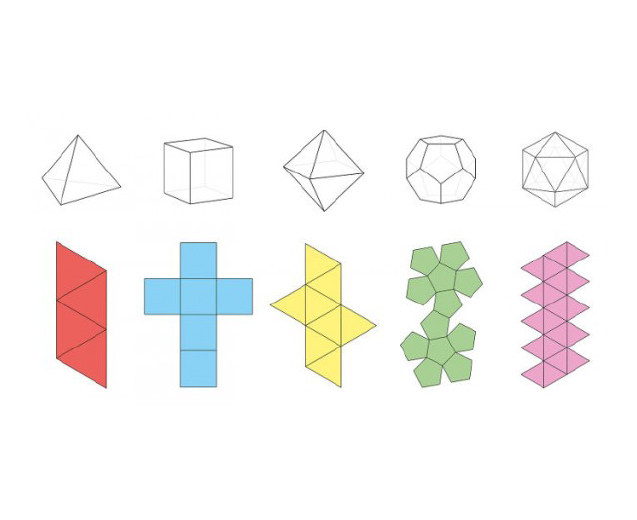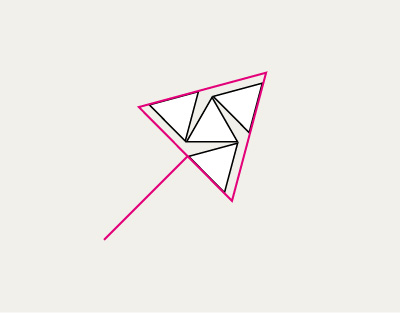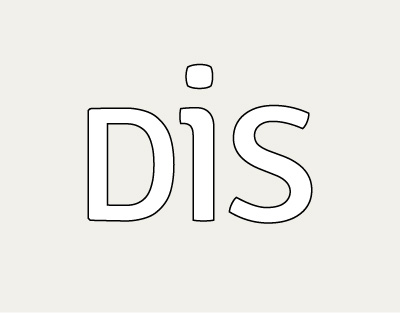Research and brand positioning
The project started with a research phase that included a brief study of the industry, an analysis of similar and competing companies regarding their visual communication, positioning, and brand architecture. Additionally, an interview with the founders was conducted to analyze the company's unique aspects, corporate identity, target audience, history, and values. Based on this research, the new brand positioning for DIS was defined.

- DIS doesn't provide ready-made answers. Instead, it asks questions to generate a unique understanding of each case and company. It acts as a partner, guiding and supporting, walking together.
- Accessibility and personalization. Everyone involved in the work has the space to contribute and share their views. Face-to-face interaction is prioritized, fostering a personal and close relationship.
- Authenticity and transparency. DIS communicates with sensitivity, expressing what needs to be said. It openly explains the reasons behind processes and decisions.
- Focus on both DIS's own purpose and the purpose of its partner companies. It acts in pursuit of solutions and results, getting involved in the causes and goals and fully embracing them.
- União do conhecimento teórico Combining theoretical knowledge with tools and technical expertise, tailored to the specific needs of each partner company
Cultural References
With the completion of the research phase about the company and the newly defined positioning, I moved on to the research of visual concepts and cultural references that would help translate them visually.





Geometry
It is the area of study that involves the application of mathematics in shapes and spaces. It also involves the physical characteristics of objects. It emerged from the need to solve practical problems and is part of the foundation of knowledge in architecture, engineering, and design.
Geometric drawing
It is the construction of geometric shapes using physical tools such as a ruler and compass or digital tools such as software. It requires precision and technique and was an essential tool for ancient mathematicians to build current knowledge.
Renaissance and geometry in culture
Leonardo da Vinci's Vitruvian Man applied geometric drawing to construct a proportionally ideal human figure and became an icon of the Renaissance, a period of profound transformations in society through sciences, art, and philosophy.
Visual References
With the defined main concepts, I created a reference panel to explore alternatives and visually translate them using colors and shapes. The chosen references for developing the logo were as follows:

Planarization
The planarization of a polyhedron is the representation of all its faces on a single plane in the form of polygons with common sides, which, when folded, form the original shape. With planarization and descriptive geometry, it is possible to study properties of three-dimensional solids.

Triads
The triangle is the simplest two-dimensional geometric shape. The triangle with three equal angles and sides is called equilateral, and the union of four equilateral triangles constructs a regular tetrahedron, the simplest geometric solid. In the color wheel, the equilateral triangle creates triadic harmony, with high contrast, vibrancy, and visual balance. Triads represent stability and cyclical movement.
The Logo
Finally, using the cultural and visual references, I began the creative process to achieve a solution that would translate the defined characteristics of the brand. After an intense process of sketching, selection, and refinement, the final logo was achieved.



Logo elements
All the choices for constructing the logo, from the shape, colors, and message of the symbol to the typography and subtitle, were derived from the concept and references defined in the research stage.

Planarized tetrahedron
Stability, cyclical movement, association with horizontal/planned management, equal parts coming together as a whole

Rotation and connection only through the edge
Representation of dynamism, freedom, autonomy, and openness

Upward arrow
Subtly indicates growth, evolution, lightness, and focus

Triadic harmony
Vibrant, inviting, and balanced color palette

Sans-serif and rounded typography
Conveys the idea of smoothness and modernity through the dot of the lowercase letter "i"

Verbal subtitle
Represents the focus on personability through a spoken and close language with rhythm"
Proportions and construction grid
The DIS logo was built based on the proportions of the Signika Negative Semibold font, where x represents the height and y represents the width of the base module. Using this module, the sizes of all other elements were calculated.

Breathing space and balance
By using the module measurement, it was possible to achieve consistency between the spacing and dimensions of the text, symbol, and subtitle.
Geometric construction
The use of a geometric base for the logo also reinforces the main concepts and references of the brand, highlighting technical refinement and theoretical foundation.
Perception survey
With the final logo ready, we conducted a quick perception survey with 10 close individuals. They were asked to write down the first three adjectives that came to mind when they saw the logo and to identify the industry in which the company operates. Additionally, they were asked to evaluate the logo using a scale of 1 to 5 for each pair of opposing adjectives. The average of the responses for each pair represented a point on the scale below. The comparison between the black and orange lines indicates how well the logo achieved the desired perception.
Adjectives
Organized (3)
Vibrant (2) / Colorful
Exciting / Joyful
In construction / Deconstructed
Efficient / Objective
Light / Clean
Intelligent
Modern (2)
Creative (2)
Reliable (2)
Adaptable / Dynamic
Solid
Technologic
Beautiful / Pleasant
Different
Industries
Consulting (4)
Human Development, Education (2)
Technology (2)
Software Dev. (2)
Creation (1)
Design (1)
Visual Identity
With the validation of the logo, the next step was the development of the visual identity, which included typography, color palette, grid, and photography. The identity served as an online and offline extension of the brand's characteristics and guided the development of all institutional materials.
Institutional Typography
The selected typefaces were chosen for their sober and high legibility characteristics, aiming to bring a sense of clarity and professionalism.
Titles
Paragraphs
Paragraphs
Color Palette
The colors were selected using a triadic harmony to symbolize balance and movement. The blue background was chosen to provide greater contrast to the vibrant main colors and convey stability.
Highlight 1
Orange
RGB
230 / 180 / 60
CMYK
10 / 30 / 90 / 0
Highlight 2
Magenta
RGB
235 / 0 / 125
CMYK
0 / 100 / 15 / 0
Highlight 3
Cyan
RGB
80 / 200 / 215
CMYK
60 / 0 / 15 / 0
Dark Background
Grayish Blue
RGB
70 / 75 / 92
CMYK
75 / 65 / 45 / 30
Light Background
Paper Blue
RGB
245 / 240 / 230
CMYK
2 / 4 / 8 / 0
Pattern / Grid
After the symbol was developed, an auxiliary grid was created to be used as an element of visual identity, which can be applied in illustrations, backgrounds, and fillings.

Photography guidelines
To maintain consistency in the identity and its relation to the brand positioning, guidelines were defined for the production of original photographs and the selection from stock image sites.



- Focus on people and the human aspect. Tools and work environments should only appear in the photographs if they serve the objectives of DIS and not as the main focus.
- Diversity and identification: All individuals present in the photographs should be relatable to Brazilians. Avoid exclusive use of European or North American biotypes. Variation in age groups is desirable.
- Avoid the use of common and overly used elements in corporate visual language: men in suits, offices, charts, computers, handshakes.
- É desejável, mas não obrigatório, o uso de fotografia própria It is desirable, but not mandatory, to use original photography and composition with people and places truly involved with DIS.
- Color palette consistent with the institutional colors: light and vibrant tones without excessive saturation.
Result
With the finalization of the visual identity, the project was approved and completed with the presentation of previews for physical institutional materials such as A4 folders, business cards, letterhead, and uniforms, as well as digital materials like email signatures, profile pictures, and cover images for social media.





